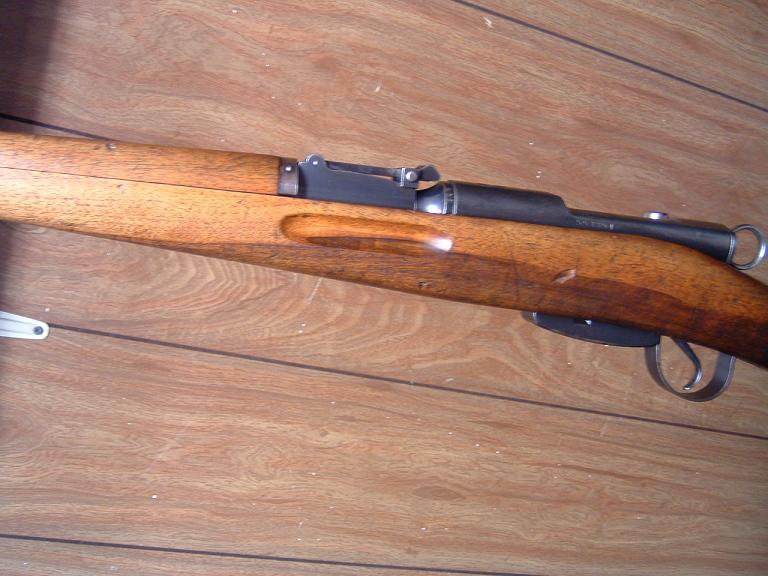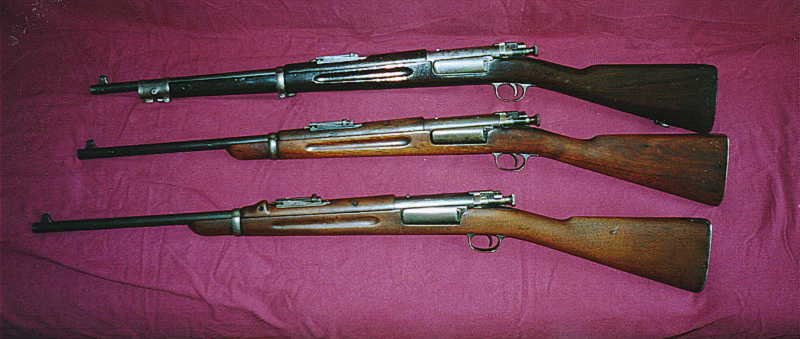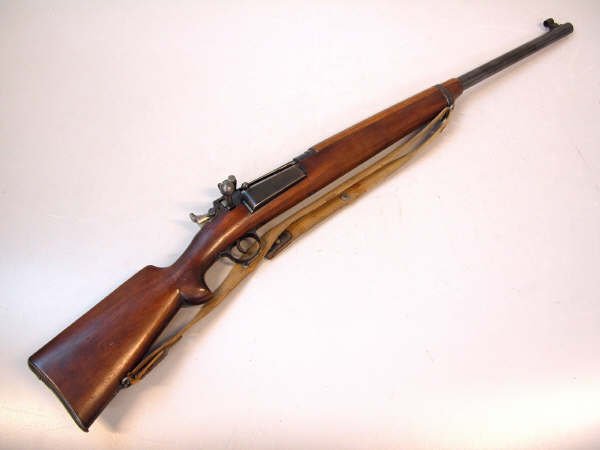Danish Krag stock
Danish Krag stock
Anyone know what kind of wood used on Danish Krag made in 1891? Thank you,Kooler.
- butlersrangers
- Posts: 9880
- Joined: Wed Oct 07, 2009 11:35 pm
- Location: Below the Bridge, Michigan
Re: Danish Krag stock
Likely wood was a European walnut, lighter in color than American Black walnut.
-
OnlineParashooter
- Posts: 707
- Joined: Thu Feb 04, 2010 5:14 am
- Location: Kragmudgeon House, CT
Re: Danish Krag stock
I've seen numerous comments on this forum asserting European (or "Italian") walnut () is lighter in color than American black walnut (). This doesn't match my personal experience with wood of both species ranging from light tan sapwood to dark brown heartwood - with the darkest being some European examples.
Photo below demonstrates part of the range in a stock containing both sapwood and heartwood.

Photo below demonstrates part of the range in a stock containing both sapwood and heartwood.

- butlersrangers
- Posts: 9880
- Joined: Wed Oct 07, 2009 11:35 pm
- Location: Below the Bridge, Michigan
Re: Danish Krag stock
'Parashooter' - I am not a 'wood expert'. I've just looked at a lot of guns. Lots of guns have walnut stocks. "Walnut" woods can vary greatly.
You have shown a good example of how color can vary greatly in a wood species. "European walnut" can display a great range of color, likely influenced by soil, sunlight, rainfall and elevation.
(BTW - Springfield Armory likely would have rejected your 'Swiss Stock'.
"Sap Wood, Hell No! Must be, straight grained American walnut, without knots, burl, or fancy grain").
You are correct. Color is not how you identify a wood.
IMHO - Peculiar patterns in the wood grain of a stock may be a better clue, as to wood species, (than color is).
Color may be changed by wood stain, grease & oils, waxes, dirt, sweat, water, blood, light and other environmental causes.
The color of U. S. Military stocks changed when Springfield Armory, in an economy move, stopped using 'Logwood Stain', (around 1928 - IIRC).
With U. S. Krags, we have the known use of Italian walnut stock blanks, (during a period of cured stock wood shortage). Color and grain are clues in identifying these stocks.
The O.P. asked about circa 1891 Danish Krag stock wood. The likely answer is 'a European walnut'. It would have different characteristics than American Black walnut.
Looking at the KCA Website Photos of Danish Krags, the stocks appear to be walnut, consistent in color, and a bit lighter in shade than most U. S. Krag stocks.
(I could, also, be wrong. Scandinavian countries also made use of woods like Beech and Elm, when walnut was in short supply).
You have shown a good example of how color can vary greatly in a wood species. "European walnut" can display a great range of color, likely influenced by soil, sunlight, rainfall and elevation.
(BTW - Springfield Armory likely would have rejected your 'Swiss Stock'.
"Sap Wood, Hell No! Must be, straight grained American walnut, without knots, burl, or fancy grain").
You are correct. Color is not how you identify a wood.
IMHO - Peculiar patterns in the wood grain of a stock may be a better clue, as to wood species, (than color is).
Color may be changed by wood stain, grease & oils, waxes, dirt, sweat, water, blood, light and other environmental causes.
The color of U. S. Military stocks changed when Springfield Armory, in an economy move, stopped using 'Logwood Stain', (around 1928 - IIRC).
With U. S. Krags, we have the known use of Italian walnut stock blanks, (during a period of cured stock wood shortage). Color and grain are clues in identifying these stocks.
The O.P. asked about circa 1891 Danish Krag stock wood. The likely answer is 'a European walnut'. It would have different characteristics than American Black walnut.
Looking at the KCA Website Photos of Danish Krags, the stocks appear to be walnut, consistent in color, and a bit lighter in shade than most U. S. Krag stocks.
(I could, also, be wrong. Scandinavian countries also made use of woods like Beech and Elm, when walnut was in short supply).
-
OnlineParashooter
- Posts: 707
- Joined: Thu Feb 04, 2010 5:14 am
- Location: Kragmudgeon House, CT
Re: Danish Krag stock
Thank you for the clarification.
A couple of images from the KCA site show the difficulty of using color to identify walnut -


A couple of images from the KCA site show the difficulty of using color to identify walnut -


- butlersrangers
- Posts: 9880
- Joined: Wed Oct 07, 2009 11:35 pm
- Location: Below the Bridge, Michigan
Re: Danish Krag stock
With U. S. Krag rifles and carbines, we know the wood used was either American black walnut or "Italian" walnut, (no matter what a stock has been subjected to, over the years).
European and British arms are trickier, since alternative stock woods were used, such as, Elm, Maple, Birch, and Beech.
European and British arms are trickier, since alternative stock woods were used, such as, Elm, Maple, Birch, and Beech.
